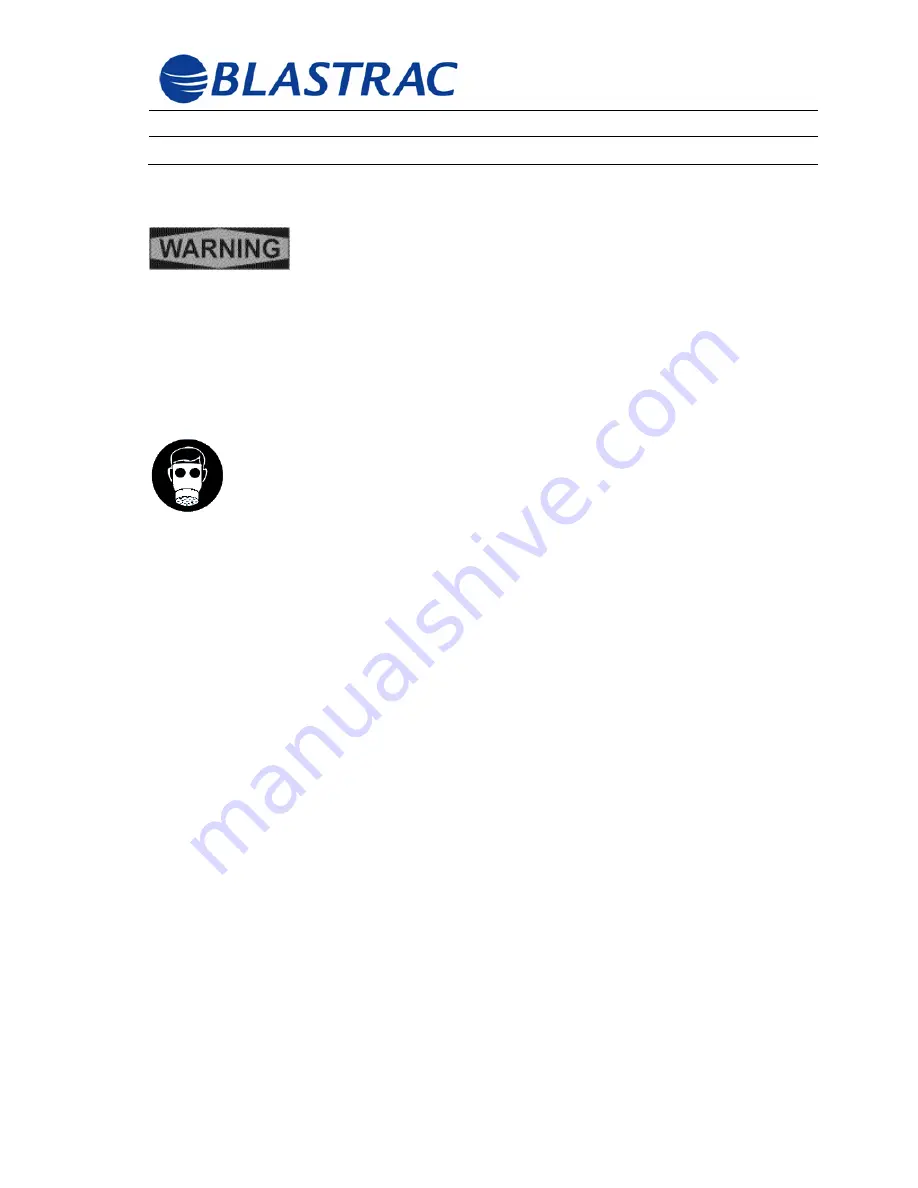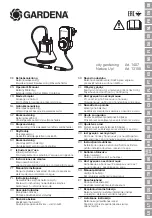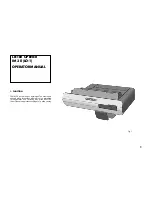
Operating Instructions
BMP-200-X
May 2006
11
Dust Warning
Some dust created by grinding and other construction activities
contains chemicals known to cause cancer, birth defects, or other
reproductive harm.
Some examples of these chemicals are:
•
Lead from lead-based paints
•
Crystalline silica from concrete and other masonry products
Your risk of exposure to these chemicals varies depending on how often you do this type of
work.
To reduce your risk work in a well ventilated area, use a dust control system,
such as an industrial-style vacuum, and wear approved personal safety
equipment, such as a dust/particle respirator designed to filter out microscopic
particles.
Dry Grinding
Dry Grinding creates a large volume of airborne dust. For health reasons, the operator
should wear an applicable respirator. The dust may contain chemicals known to cause
serious illnesses, including Silicosis - a fatal disease of the lungs.
Check the chemical properties of the material to be removed and follow all EPA/OSHA
regulations.
An Industrial vacuum, capable of handling high volume of fine dust, should be used when
dry grinding with this machine. If the material being used is hazardous or contains Silica -
the vacuum unit should be capable of removing Silica and hazardous particles of less than
3 microns and if necessary, have the capability to be equipped with a HEPA filter.
Most standard drum type units use a paper bag filter. The dust created during grinding is
extremely fine and will clog the filter bag of these units and eventually damage the
vacuums motor. In addition, damage to the engine could occur.
The collected debris and filters should be disposed of according to procedures that comply
with current EPA/OSHA standards
Serious injury or death could occur if this machine is used improperly.












































